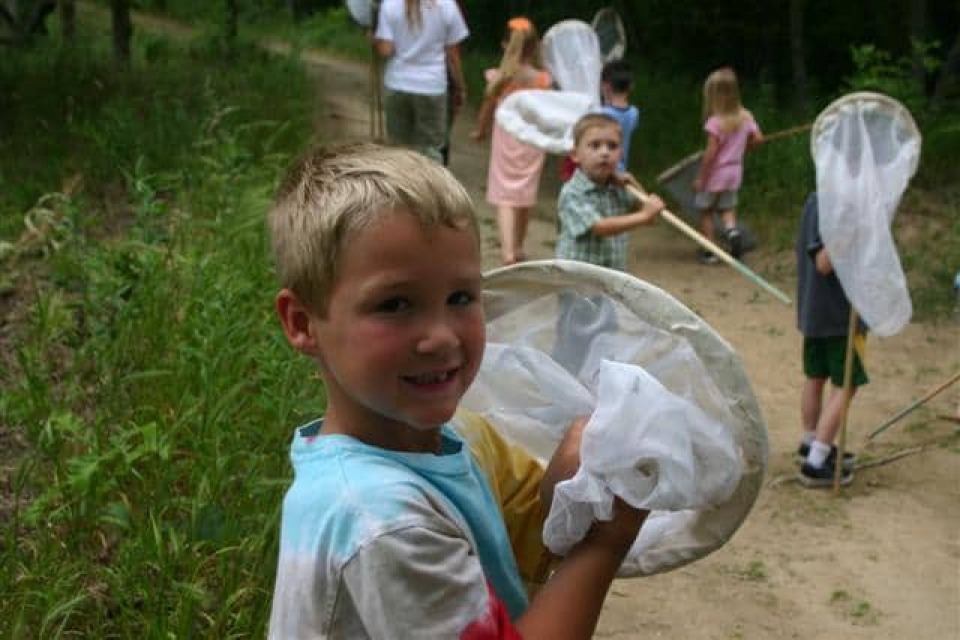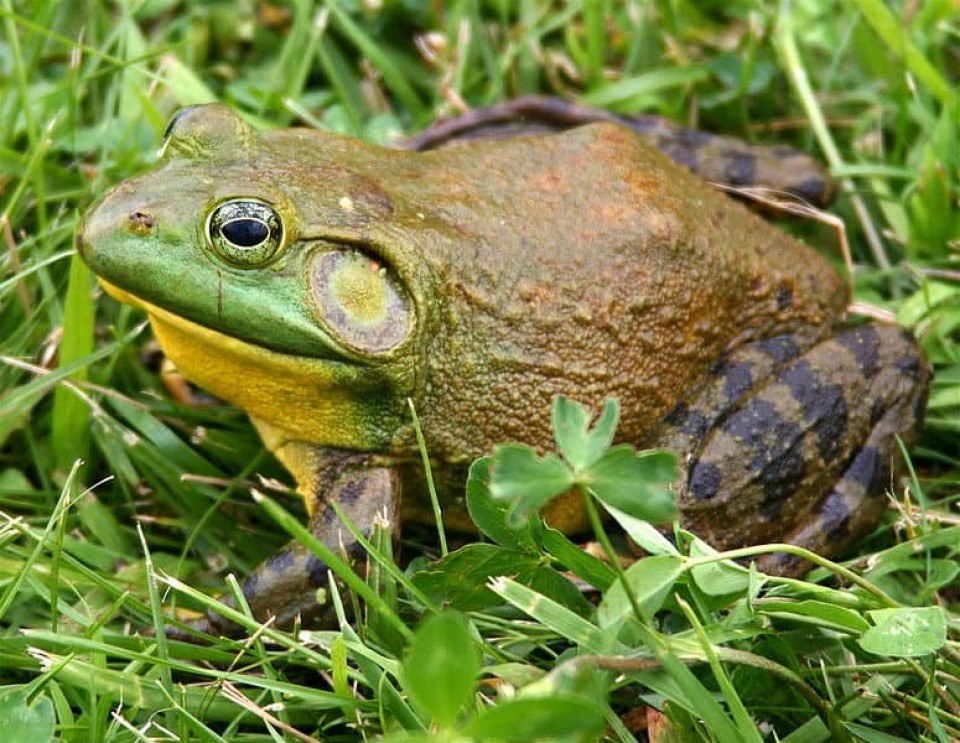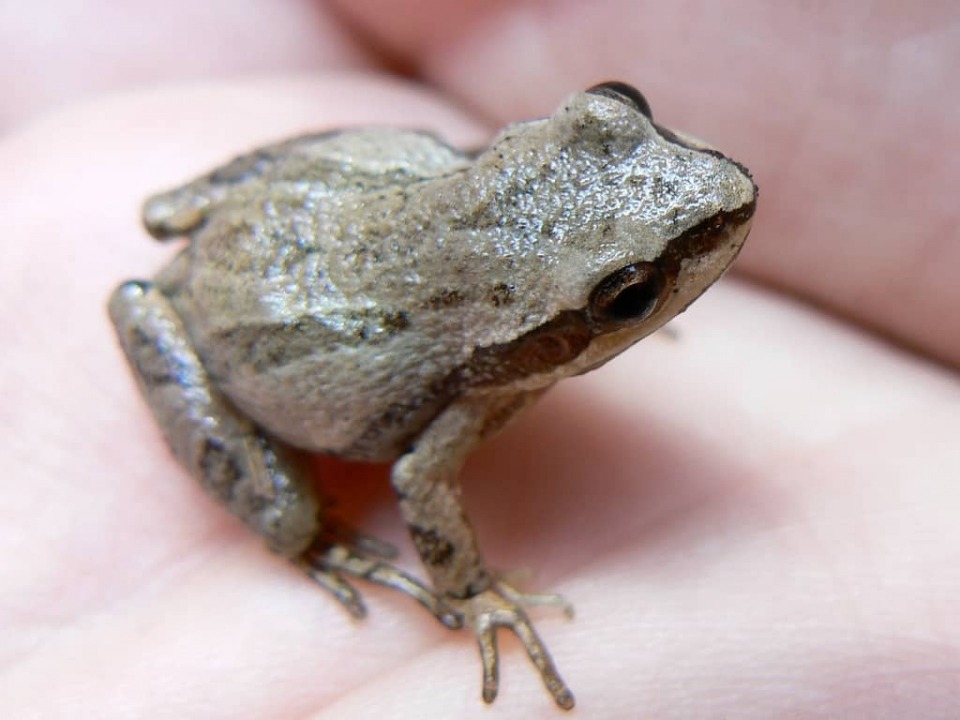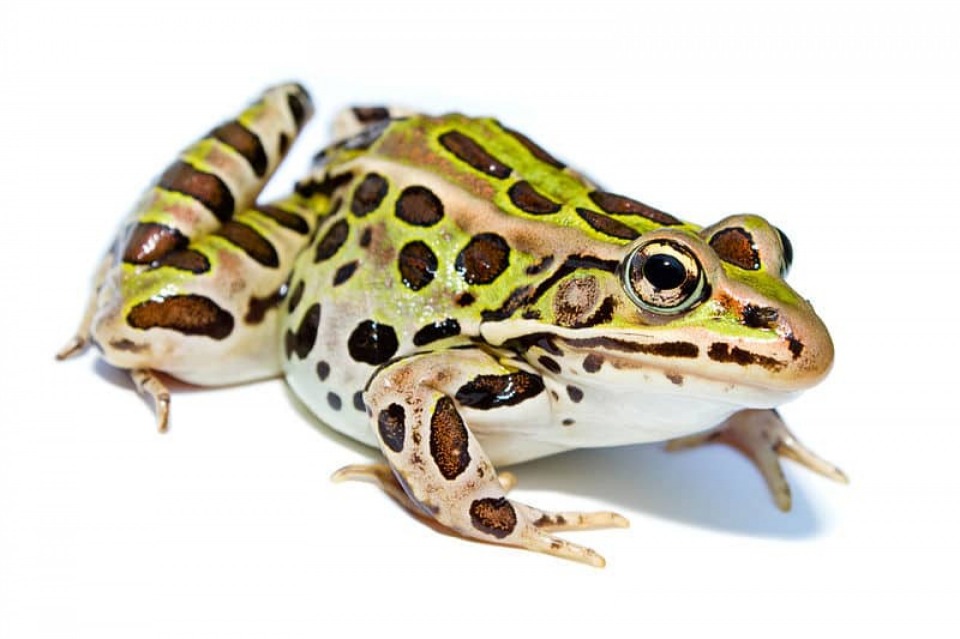As a child nothing thrilled me the way the croak of a frog did. My cousins and I would wait for the chorus of calls to begin at sunset and spent the next hour engrossed in our hunt. Tracking them by sound, attempting to name them simply by their call, it made the summer nights magic. Catching our amphibian friends was the greatest challenge of all. When we were rewarded with a newly caught friend we would shout with joy only rivaled by Christmas morning. Our friend was handled carefully with muddy fingers and wide eyes until it was time to return him to his home.

Frogs still fascinate me, and I am happy to report that my son is much the same. We spend many nights on our front porch listening to our small neighbors as they welcome the spring and are proof that our efforts to provide them with native habitat in our little yard are appreciated.
Frogs are amazing creatures; we have fossil records of these amphibians dating back 265 million years. They are widely distributed, ranging from sub-arctic regions to tropical rainforests and they account for nearly 85% of all amphibian species. Here in Iowa they signal the warming of spring with their mating calls, help reduce the insect population, provide an important link in the local food chain, and they are an indicator of the overall health of our ecosystem. Frogs cannot survive in a stressed or damaged environment so the annual chorus of frogs is a sign that our work in restoration and land stewardship is successful. Iowa is home to some pretty amazing frogs. Let’s talk about 3 common species you may see while you are out and about in Pottawattamie County this spring.
The first, of course, is the American Bullfrog.

This is the largest frog in North America, some of them measure 8” long! Coloring of this frog varies between light green-yellow to a dark brown or black with mottled, almost striped markings on their rear legs. These friends are nocturnal and need a permanent body of water to survive so you are most likely to find them near ponds, lakes or swamps. They creep out of hibernation in April and begin their breeding cycles in May. Their tadpoles can take up to 2 years to mature so they are found in water that is deep enough to not freeze during the winter. The name, Bullfrog, is a reference to their distinctive deep toned “rum-rum-rum” call. This single note call sounds like a bass (or bull) fiddle being played and it can be heard over a quarter of a mile away.
Our next frog is Iowa’s smallest, the Western Chorus Frog.

Only an inch long but a tough little friend, they are nocturnal and very tricky to spot. The best time to see them is on warm nights when they come out to call. Males and females will gather in large groups to call, hence the name Chorus Frog. Their call is a high pitched almost raspy sounded “cree-ee-ee-eek”. Try running your fingernail along the edge of a small plastic comb, hear the creaky strumming sound? That is a pretty good imitation of the male’s mating call. They are usually a greenish grey with smooth skinned and can be identified by the 3 stripes along its back. This little guy prefers grassy areas for its home but still needs to be near a significant source of water for breeding.
Our final frog is the most familiar frog in Iowa, the Northern Leopard Frog.

As the name suggests this frog features a distinctive, spotted pattern. Green to brown in color it features large, dark, circular spots boarded by a lighter ring along its back and legs. This frog will measure about 3.5” inches long and can be found just about anywhere you have water. They are less secretive than other species of frogs and occasionally will make their homes near humans, we have one that lives in our fish pond! The call of the male can sound a bit like a snore, a deep “urr-urr-urr” and it peaks during their March to June mating cycle when they lay over 6000 eggs at a time! They rely on their speed to avoid predators and have an incredibly large mouth. They have been known to swallow small birds and garter snakes with their massive mouth.
The best way to spot a frog is to be still and listen. Skittish by nature these slippery creatures are elusive and secretive, but the challenge of finding them is some of the best fun you can have outdoors.
For more information on Iowa’s native frogs visit www.aza.org.
Originally Posted June, 2016
Next BlogGet a full year of free access to all Pottawattamie County parks.
Become a member of the Pottawattamie Conservation Foundation